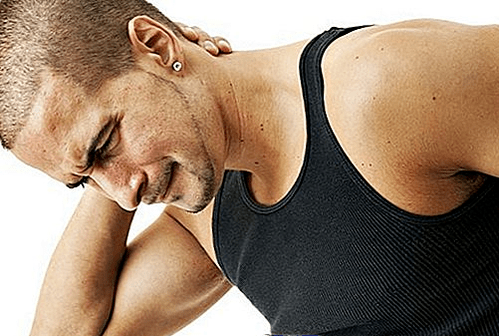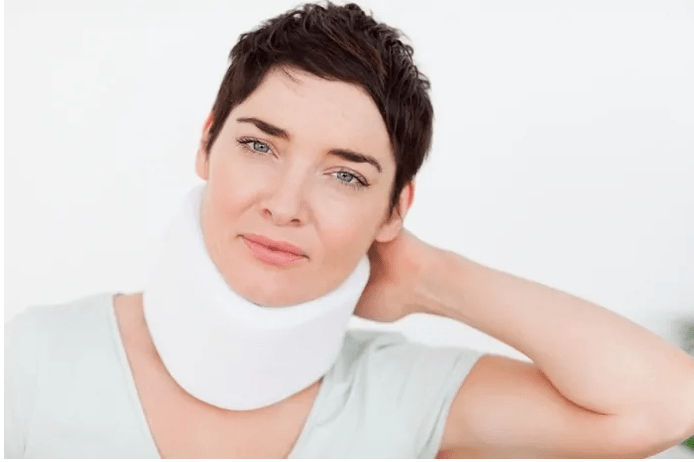Osteocondrosis is most often observed in the spine of the cervix, due to the anatomical properties of the structures of the class. First of all, the cervical vertebrae are very tight. Second, the neck muscle frame is poorly developed. For these reasons, the cervical ghosts and nerve roots, blood vessels, blood vessels, low cervical germs are as easily affected as the upper as the upper.
Cimpes of osteochondrosis of the cervix
Clinical symptoms of osteochondrosis of the cervix are extremely diverse. Many people do not even refer to all kinds of symptoms (pain in their hands, dizziness, etc. ) to the pathology of the neck. Generally speaking, all the symptoms that occur with the cervix with osteochondrosis can be considered in three syndromes:
- Compression-brown syndromes;
- Irritant reflex syndromes;
- Vail artery syndrome.
Compression-bark syndrome
Based on the background of the cervix osteochondrosis, intervertebral hernia and osteophytes may be formed. These structures compress the nerve roots, leading to the occurrence of symptoms of radiculitis. Compression of each spine is associated with specific reflex, motorized, sensitive disorders:
- When the C1 spine is compressed, pain occurs and impaired sensitivity (decrease in sensitivity, numbness, tingling skin, feeling of goosebams) in the parietal area;
- When the C2 spine is compressed, the pain develops and a change in sensitivity in the parietal and consuming area of the head;
- When the C3 spine is compressed, pain is observed and a change in the sensitivity of the neck. In addition, a person may be disturbed by a feeling of swelling of the language, the difficulty of language movement and the impairment of speech.
- When the S4 spine is compressed, the pain and the change of sensitivity of the wrist. Icote, Dyspony can occur. Because the diaphragmatic nerve fibers pass through the spine, the pain in the heart can occur by compression of the spine, breathing.
- When the C5 spine is compressed, shoulder pain and a change in skin sensitivity on the outer surface of the shoulder.
- When the C6 range is compressed, the pain extends from the neck to the shoulder, the outer surface of the shoulder, forearm and brush thumb. We observe a violation of skin sensitivity in this area. The two -headed muscle is exaggerated and the reflex decreases.
- When the C7 spine is squeezed, the neck spreads from the neck under the shoulder blade, the shoulder's outer surface, forearm and hand fingers. We observe a violation of skin sensitivity in this area. The three -headed muscle is exaggerated and the reflex decreases.
- When the C8 spine is compressed, the cervical pain spreads to the small finger. The sensitivity of the skin in this area is confused. Hypotrophy and reflex decrease from three -headed muscles.
In the case of radicular syndrome, acute pain and its strengthening are typical when moving the head.
Irritation reflex syndrome
The early stages of osteochondrosis are characterized by the occurrence of reflex syndromes. In the case of cervical osteochondrosis, the following options for reflex syndromes may occur:
- Cervicalgia is an intense painful pain in the neck, which is expressed as much as possible after waking up in the morning and when the head, cough and laughter are turned.
- Cervicobrachialgia - pain focuses on the neck and chest.
- Cervicobrachialgia - pain in the neck, shoulder and forearm.
Cervicobrachalgia can occur with muscle-tonic, vegetative-vascular and neurodistrophic manifestations. Isomonical syndromes are the consequences of reflex muscle spasm. The following muscle-tonic syndromes can be distinguished:
- Lower oblique muscle syndrome - constant pain in the back of the neck and head, which is significantly increased during the turning of the head;
- With the pain of the shovel-reflective syndrome, the pain in the scapula's neck and upper corner, as well as on the shoulder or even the chest. Typical is the increase in pain during the pronunciation of the brush, which is open at the lower back.
Neurodistrophic syndromes include shoulder-packed periarthrosis, epicondyles shoulder, shoulder-war syndrome. Shoulder -Váll Periarthrosis - shoulder joint pain, increasing the movement of the shoulder or raising the hand. The pain can radiate to the arm, the neck. The skin in the shoulder joint is swollen. The presence of spatular periartroz signs for shoulder syndrome is characterized by combined with vegetative-vascular, trophy changes in the wrist joint and brush. The brush skin becomes a beak, its color changes and the local temperature rises. Epicondyles shoulder is a neurodistrophic change in the shoulder rod instead of fixing a lot of muscle. It manifests itself with painful, constant pain in the rod area, enhancing the sudden movements of the elbow or brush. 
Vail artery syndrome
The spine artery is carried out on a channel formed by the cervical vertebrae. The vessel provides blood supply to many brain structures. The vessel is possible due to both reflex cramps and mechanical compression. When the vessel is narrowed, the spinal artery syndrome is formed by the following symptoms:
- From a coronary point of view: a painful, constant headache more often to one side, noticeably enhanced with head movements. The pain spreads from the back of the forehead.
- The scalp is painful, even with light touch, even when combing the hair.
- Kohleovestilaryi violations: dizziness, tinnitus (ringing in the ear), light decrease and balance is manifested.
- Visual disorders: Darkening, blinking in front of my eyes.
- Neurasthenic syndrome: irritability, emotional library, sleep disorders.
- Vegetative symptoms: heat, chills, cooling of hands.
- Fluctuation of blood pressure.
- By compression of the spinal artery caused by sharp turning the head, one may lose consciousness. This option is also possible: one falls as if they are primed, but at the same time conscious. Such an infringement is called Drop Attacks.
Treatment of cervical osteochondrosis
It is very difficult to fight osteochondrosis in advanced form. Various drugs are used to eliminate the symptoms of the disease. Therapeutic gymnastics as well as physiotherapy and massage play an important role. In some cases, wearing a special collar is very useful. Folk remedies help to supplement treatment.
Cervical collar
Wearing a collar helps to relieve muscle tension from the neck and gives the spine a good position, thus eliminating the compression of the spine artery and nerve roots. The cervical collar is stiff (Shantsa collar) and inflatable. The Shanz collar is a dense frame that is secured to the neck. It assumes all the severity of the head, thereby relieving the tension of the neck. An inflatable collar is a device that should be placed on the neck and then with an attached pear, pump air. The inflated collar tightens the spine. The collar wears not all day, but a few hours a day. The average length of the device is one month. Please note that the need to use the collar is determined by the doctor. Do not do so without the doctor's prescription. In some cases, the collar can hinder ships and nerves, which can cause serious consequences.
Exercises for the cervix osteochondrosis

Therapeutic gymnastics is recommended for all patients with osteochondrosis in the absence of contraindications. The performance of physical exercises is contraindicated during the worsening of the disease. After pain relief, therapeutic gymnastics can be done. The regular performance of the exercises allows you to strengthen the muscle frame and load the discs between the vertebrae. Regular physical activity contributes to the improvement of cervical blood supply and the normalization of metabolism in the discs between the vertebrae. Approximate practical set of osteochondrosis of the cervix:
- Sit on a chair. Turn your head right and left.
- Tilt your head and touch the chest attack.
- Pull your neck back while pulling a chin.
- Put your palms on your forehead and press while it is important to tilt your head forward, resistant.
- Your palms should be applied alternately to the temples, and in the previous practice, to manually put the resistance to the movement of the head.
- Raise your shoulders as much as possible, count to ten. Then lower your shoulders and relax. After ten seconds, perform the same manipulation.
All exercises must be repeated ten times.

























